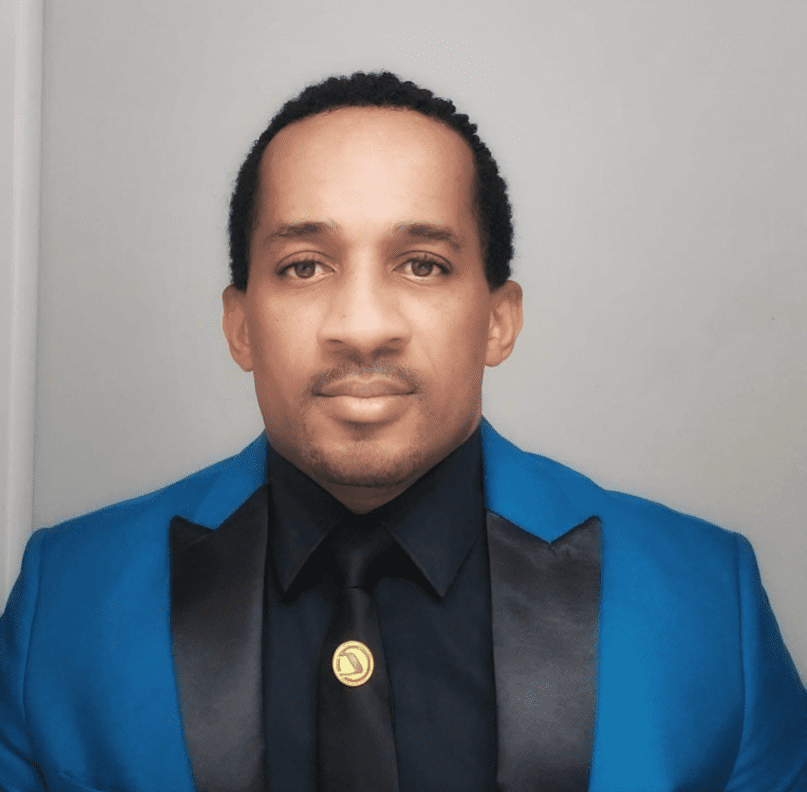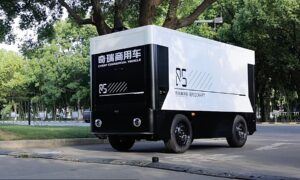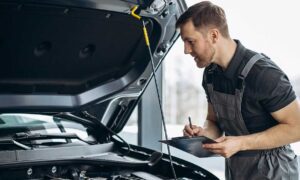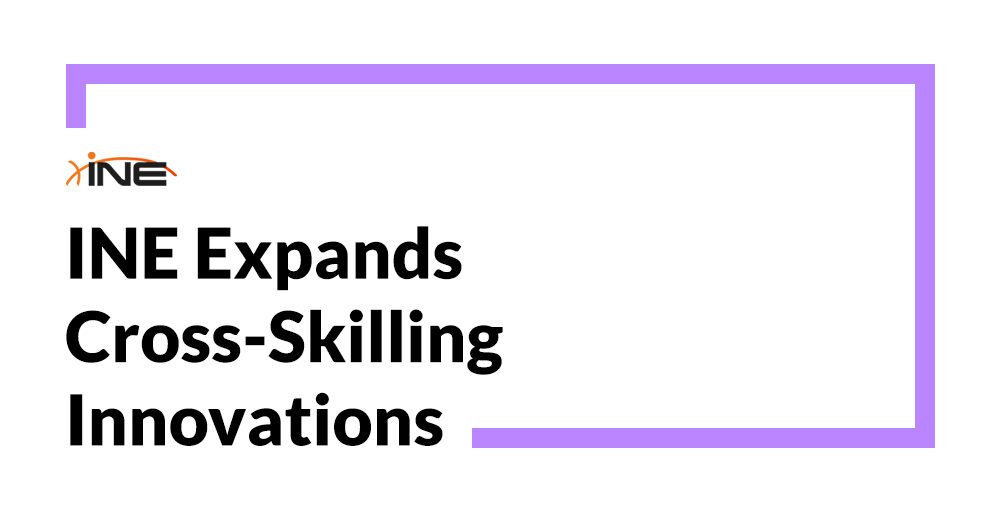The global race to create safe, intelligent, and self-managing vehicles has entered a new phase, and at the center of this movement is Emmanuel Cadet, a software engineer whose groundbreaking work is redefining how machines think, communicate, and protect themselves. His newly published study, “Autonomous Vehicle Diagnostics and Support: A Framework for API-Driven Microservices,” has already been hailed by engineers and policymakers as a milestone in the evolution of autonomous vehicle technology.
“Autonomous systems generate incredible amounts of data every second,” Emmanuel said. “The real challenge isn’t how to collect that data—it’s how to make sense of it instantly, securely, and intelligently.”
His research offers a bold answer to that challenge. Emmanuel designed an API-driven microservices framework that allows every component in an autonomous vehicle to function independently while remaining fully connected. Each service—whether it manages braking, navigation, or fault detection—communicates through secure APIs. “I wanted to build a system that behaves like a network of small, intelligent organisms,” he explained. “Each one performs its function autonomously, but together they create something powerful, adaptive, and alive.”

He believes this structure marks a clean break from traditional vehicle systems. “Monolithic architecture is a relic,” Emmanuel said. “When one part fails, everything stops. That’s not how intelligence should work. Microservices allow resilience—each function survives, recovers, and keeps the system alive.”
The paper outlines how this design isolates faults, preventing a single failure from spreading. “You can’t eliminate failure,” he said. “But you can design for survival. A smart system doesn’t panic—it contains, adapts, and corrects.” Emmanuel explained that in his model, each vehicle subsystem is self-aware and recoverable. “A fault in navigation doesn’t affect communication or braking. Every process has its own safety net.”
He also emphasized that predictive intelligence must be part of the design. “True intelligence is proactive,” Emmanuel said. “Vehicles should anticipate faults, not wait for them.” His framework enables sensors to communicate anomalies in real time, triggering preventive maintenance or adaptive responses automatically. “If a sensor detects unusual vibration or overheating, the system doesn’t just record it—it reacts. That’s the future: vehicles that protect themselves.”
Security, Emmanuel insists, is the foundation of trust. His framework integrates OAuth2 authentication and TLS encryption to ensure that every connection between microservices and external systems is secure. “If data isn’t protected, the system isn’t intelligent,” he said. “Security must be engineered into the DNA of every line of code.”
He linked this philosophy directly to public confidence. “People will trust autonomous vehicles when they trust the systems behind them,” Emmanuel said. “And trust begins with security, transparency, and reliability.” His approach aligns with the UK’s National Cyber Strategy 2022, which promotes secure-by-design principles across AI and connected transport systems. “A vehicle must be accountable for every byte it sends and every decision it makes,” he added.
For Emmanuel, the idea of architecture is not limited to software—it’s about ethics. “Every engineer writes values into the code,” he said. “When a system makes decisions on its own, those values matter. Safety, privacy, and fairness can’t be add-ons; they must be built into the logic.” He sees technology as an expression of responsibility. “The moment we give machines autonomy, we give them influence. The way we design them defines how that influence is used.”
He spoke about his guiding principle in simple terms. “Good engineering doesn’t eliminate risk,” Emmanuel said. “It manages it. It prepares for it. It respects it.” That philosophy shapes every part of his design—fault isolation, predictive diagnostics, and encrypted communication all serve a single purpose: reliability under pressure.
One of the most striking elements of Emmanuel’s work is how easily it adapts to the future. The framework is modular and scalable, allowing manufacturers to integrate new technologies without reengineering existing systems. “If a vehicle’s AI model improves or a new sensor type is developed, you plug it in,” he said. “Nothing breaks. That’s how software should evolve—it should grow with the world, not against it.”
This adaptability extends beyond vehicles. “The same architecture works in other industries,” Emmanuel said. “Energy grids, medical systems, banking—anywhere that depends on complex data. Microservices bring stability to systems that can’t afford downtime.”
Emmanuel also believes that collaboration across industries will accelerate innovation. “Autonomous vehicles aren’t just about cars,” he said. “They touch finance, infrastructure, communication, and policy. The future belongs to engineers who can build bridges between disciplines.”
He described his motivation as deeply practical. “I’m not designing concepts for labs,” he said. “I’m designing systems for the road—systems that can survive rain, heat, error, and time.” That grounding in real-world function, he believes, is what separates theory from engineering. “Ideas are beautiful, but systems must work under pressure. That’s what matters.”
Throughout the conversation, Emmanuel returned repeatedly to the same theme: self-management. “Autonomy without awareness is danger,” he said. “A vehicle should not only move on its own; it should manage itself—monitoring, healing, and adapting in real time.” His framework is a step toward what he calls “self-reliant systems”—machines that can handle complexity without losing control.
He also pointed to the environmental advantages of intelligent architecture. “Efficient systems consume less energy,” Emmanuel said. “When diagnostics are smart, you extend the life of components and reduce waste. Sustainability begins with intelligent design.”
Asked about his proudest achievement in the project, Emmanuel paused before answering. “It’s not the code,” he said. “It’s the mindset. We’ve proven that reliability can be designed—not discovered, not improvised, but engineered intentionally.”
He sees his framework as part of a broader movement in global engineering—one that prioritizes transparency and responsibility over speed. “We have the technology to create systems that act faster than humans,” he said. “Now we need to ensure they act better than humans—ethically, consistently, and safely.”
His reflections were both technical and philosophical. “Technology should serve humanity, not challenge it,” Emmanuel said. “When machines begin to decide, the engineer becomes the conscience. That’s what drives me—the belief that engineering is a moral discipline as much as a technical one.”
In his view, the future of automation will depend on systems that evolve intelligently and ethically. “Autonomous vehicles are not the end goal,” Emmanuel said. “They’re the first test. If we can make cars safe, adaptable, and trustworthy, we can build anything.”
He also spoke about his commitment to continuous learning. “Every year, I set a new technical goal for myself,” he said. “It could be mastering a new programming language, improving system security, or publishing research. The point is to keep growing. Technology never stops moving, and neither should engineers.”
Reflecting on the journey that led to this breakthrough, Emmanuel was modest but direct. “I started my career building systems for banks,” he said. “Those environments taught me one rule—failure is not an option. I carried that mindset into every project since. Whether it’s finance or mobility, reliability is non-negotiable.”
His research, published in the Engineering Science & Technology Journal (Volume 5, Issue 10, October 2024, Pages 2934–2965, DOI: 10.51594/estj.v5i10.1647), represents more than a technical contribution. It offers a philosophy for designing intelligent systems that prioritize safety, scalability, and ethics.
As the interview ended, Emmanuel summarized his vision in one line that captures both his precision and his humanity. “We’re not teaching machines to think like us,” he said. “We’re teaching them to think responsibly for us.”
He paused, then added quietly, “That’s not just engineering. That’s trust by design.”


































